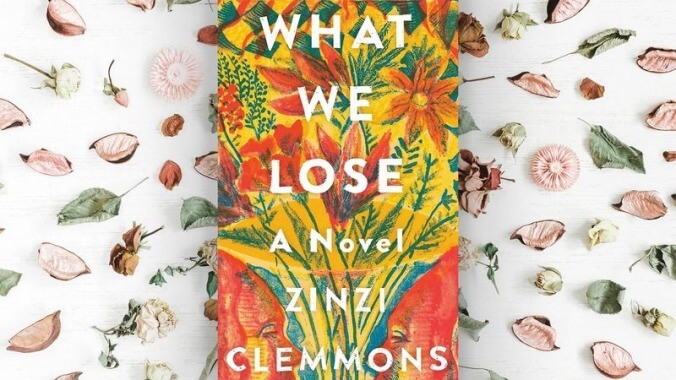Zinzi Clemmons’ grief-filled What We Lose brings new depth to an old topic

Zinzi Clemmons uses a poetic style, rich imagery, and fervent introspection to delve deep into the heart of racial divides, economic guilt, and the severe desperation of loss in her debut novel, What We Lose. The story not only thematically and structurally changes the usual story of loss, but also highlights a hardened subject matter with new and original attention. Thandi, a young woman growing up on the East Coast, struggles to find balance in her life after the slow and heartbreaking death of her South African mother. In her journey to accept that which is beyond loss, Thandi searches for who she has become and what is left when nothing else seems to remain.
The novel spends a great deal of time—possibly its most impressive main mission—in contextualizing Thandi’s complicated and unrelenting feelings. The diction and narrative style become a kind of metaphor to interpretations of depression, grief, and love. Chapters are often brief, a string of thoughts colliding, all leaning toward literary poetic styles that act like small stories of their own. This style succeeds in sifting and parsing through Thandi’s life—never linearly, but with a pattern to the madness. In one eloquent moment, Thandi speaks of feeling isolated and being unrooted as a light-skinned black woman, a feeling of never truly belonging anywhere. This is followed immediately by an image and a single phrase, emphasizing the entirety of a blank white page.
Clemmons brings insight to Thandi through other such conventions: There are analytics, images, and graphs with which the narrator tries to better understand her grief. Thandi maps time and emotion and focuses on an asymptote and its connection to sublime feelings:
This powerlessness makes thinking deaf or blind to natural beauty… it might be said that in the sublime feeling, thinking becomes impatient, despairing, disinterested in attaining the ends of freedom by means of nature.
Though incorporated sparingly, these brief encounters give new meaning to Thandi’s attempts to express her grief. Mathematics will possibly give her the understanding she is looking for. Any cliché about death, loss, or heartbreak is broken down to the bits and pieces of grief that are quite often unseen.
Clemmons is incredibly successful in relating emotion to the reader without overly justifying it. The craved “aha!” moment of acceptance is hard to find and even harder to understand. Overwhelmed by thoughts of finding love or simply a feeling that can resemble it, Thandi is often left without resolve, her journey creating a deeper void to fill and an unrelenting tear that will never be fixed. At times, she is cold and embittered, viewing her life from a calculating position. It is this unconscious obsession that gives her a sense of purpose, yet more often than not, she is left more alone than before. It’s a reminder of the reality of loss or tragedy—that it cannot be neatly packaged and understood on simple terms.
Although much of the novel excels in never being over-explanatory—specifically by describing without telling—there are brief sections that spell out the feeling Clemmons is trying to capture more so than others. It does not work, especially when so much of the story does well to avoid it. These moments are too infrequent to completely throw the novel off and are generally forgettable, yet it would have given the ending more impact without them.
With a subject that has been written about so often, What We Lose innovates the story of grief. The novel is equal parts a story of love, a poem of vulnerability, and an examination of feeling. Thandi reflects using historic photographs, despairs, and seeks resolution within numbers—a contemplation of death and identity that will never cease and only grow numb with time.
Purchase What We Lose here, which helps support The A.V. Club.